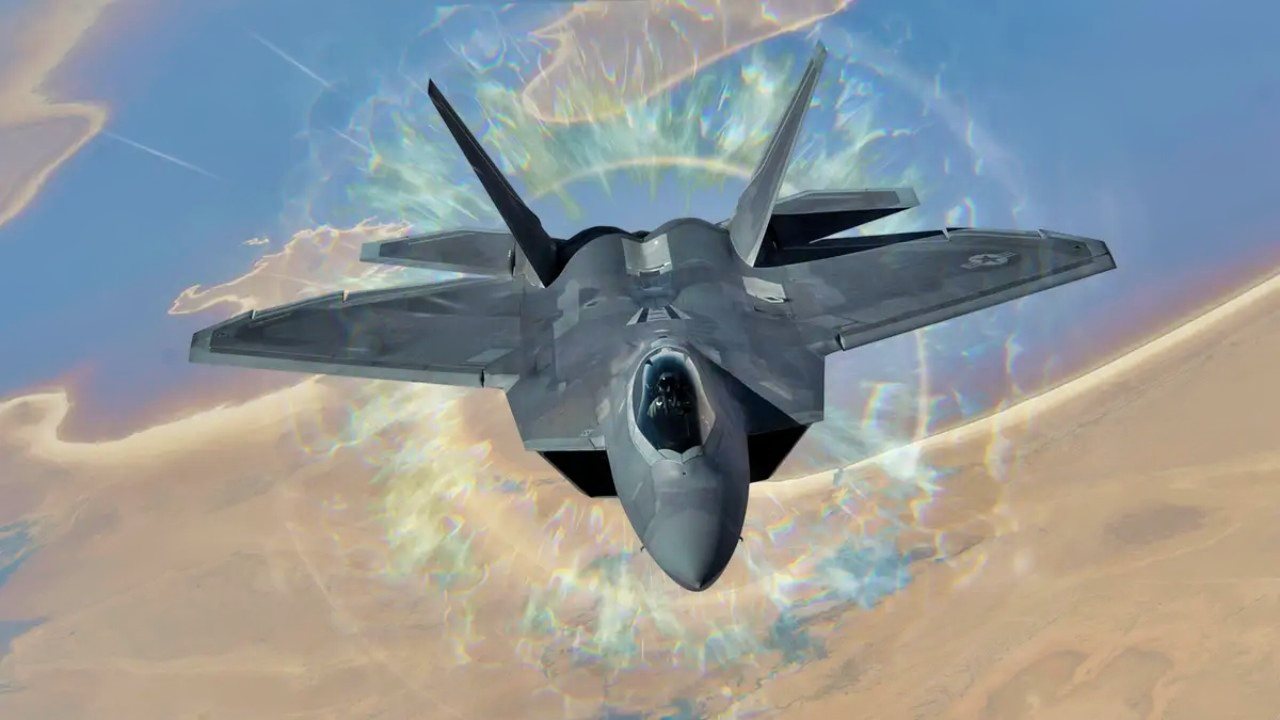NGAD: The U.S. Air Force's $300 Million Fighter Could Be a Real Game Changer
Known as the Next Generation Air Dominance (NGAD) program, the sixth-generation fighter is expected to be technologically advanced – and fiscally prohibitive, leading some to question whether the advanced airframe is worth the sticker price
Will NGAD Be Worth It? While few nations even can develop and field a fifth-generation fighter, the United States is already working on a sixth-generation fighter.

Known as the Next Generation Air Dominance (NGAD) program, the sixth-generation fighter is expected to be technologically advanced – and fiscally prohibitive, leading some to question whether the advanced airframe is worth the sticker price.
F-35, F-22 and Fifth-generation technology
Only the US, Russia, and China have successfully fielded a fifth-generation fighter. Only the US and China have fielded a fifth-generation fighter (the US’s F-22 Raptor and F-35 Lightning II; China’s J-20 Mighty Dragon) in meaningful quantity. Fifth-generation technology is still cutting-edge beyond what most nations can develop.
Fifth-generation technology includes stealth, internal weapons bays, advanced avionics, supercruise, thrust vectoring, data fusion, interconnectivity, and, in the case of the F-35, a situational-awareness-boosting pilot helmet costing $400,000 per unit.
The US was ahead of the curve in developing fifth-generation technology. Feeling the pressure of Soviet aerospace development, the US began working towards the F-22 Raptor in the mid-1980s. By the end of the 1990s, the F-22 was flying, demonstrating clearly that a new era in aviation had arrived.
Now, however, with China and Russia catching up, the US is taking the initiative to again set the curve with fighter tech advancement. The NGAD program commenced in 2014 and is expected to one day replace the F-22 Raptor, despite the fact that the F-22 is still, in many respects, the envy of the aviation world.
The next-generation fighter
What is a sixth-generation aircraft?
The exact technology in a sixth-generation fighter has not yet been defined. The class exists only in concept. And in concept, the only defined feature of the sixth-generation fighter is that it will be more advanced than the fifth-generation fighter. That’s vague, but what it probably means is that the jet will have advanced digital capabilities, human-systems integration, variable cycle engines, increased range stand-off and BVR weapons. Perhaps even laser weapons.
The NGAD specifically is expected to revolve around four technological advancements: propulsion; uncrewed systems; materials; and sensors.
With respect to propulsion, “the Air Force intends to field these new fighters with advanced adaptive cycle engines that will offer more power, more fuel economy, better heat regulation and power production, and greater loiter times than were possible with earlier engine designs,” journalist Alex Hollings wrote.
With respect to materials, “advances in material science are often among the most secretive elements of stealth aircraft design, as today’s Radar Absorbent materials are rated to absorb as much as 80% of inbound radar waves, but limit fighter performance due to their fragility. Improved RAM could reduce maintenance costs, improve stealth, and allow for greater performance,” Hollings wrote.
And with respect to sensors, “the NGAD program leans further into the F-35’s air combat methodology of detecting and targeting enemy aircraft from greater ranges than ever before, allowing the fighter to engage and destroy enemy jets before they ever even know the fighter was there.”
The NGAD will be built around a “family of systems.” The families centerpiece system will be a manned aircraft – the successor of the F-22. NGAD’s manned aircraft has been referred to as the Penetrating Counter-Air (PCA). In addition to the PCA, the NGAD program is expected to also feature an uncrewed element – the collaborate combat aircraft (CCA), also known as the loyal wingman platform.

NGAD stems from a 2014 Defense Advanced Research Project Agency (DARPA) study. The DARPA study was designed to explore new concepts in air superiority, which would be relevant in the 2030s. The study eventually evolved into the NGAD program, which aims to field a sixth-generation fighter.
In Fiscal Year 2023, the Air Force allocated $1.66 billion for the NGAD program, suggesting that the program is properly underway. Projections hold that an additional $11.6 billion will be needed to advance NGAD between Fiscal Years 2024 and 2027. The cost of each PCA airframe per unit has not yet been disclosed, but Secretary of the Air Force Frank Kendall said that he expected each unit to cost “multiple hundreds of millions,” So, is the massive NGAD price tag worth it?
NGAD: Worth the investment?
According to Hollings, the NGAD, even at a multi-hundred-million-dollar-

But, “the truth is when comparing the NGAD’s projected cost to fighters like the Raptor, or even the venerable F-14 Tomcat… that sticker shock soon gives way to a sense that NGAD may actually be a pretty good deal, even at $300 per airframe,” Hollings wrote.
We’ll see how the taxpayers feel once the bill comes due.
About the Author
Harrison Kass is a defense expert with over 1,000 published articles. An attorney, pilot, guitarist, and minor pro hockey player, Harrison joined the US Air Force as a Pilot Trainee but was medically discharged. Harrison holds a BA from Lake Forest College, a JD from the University of Oregon, and an MA from New York University. Harrison listens to Dokken.


